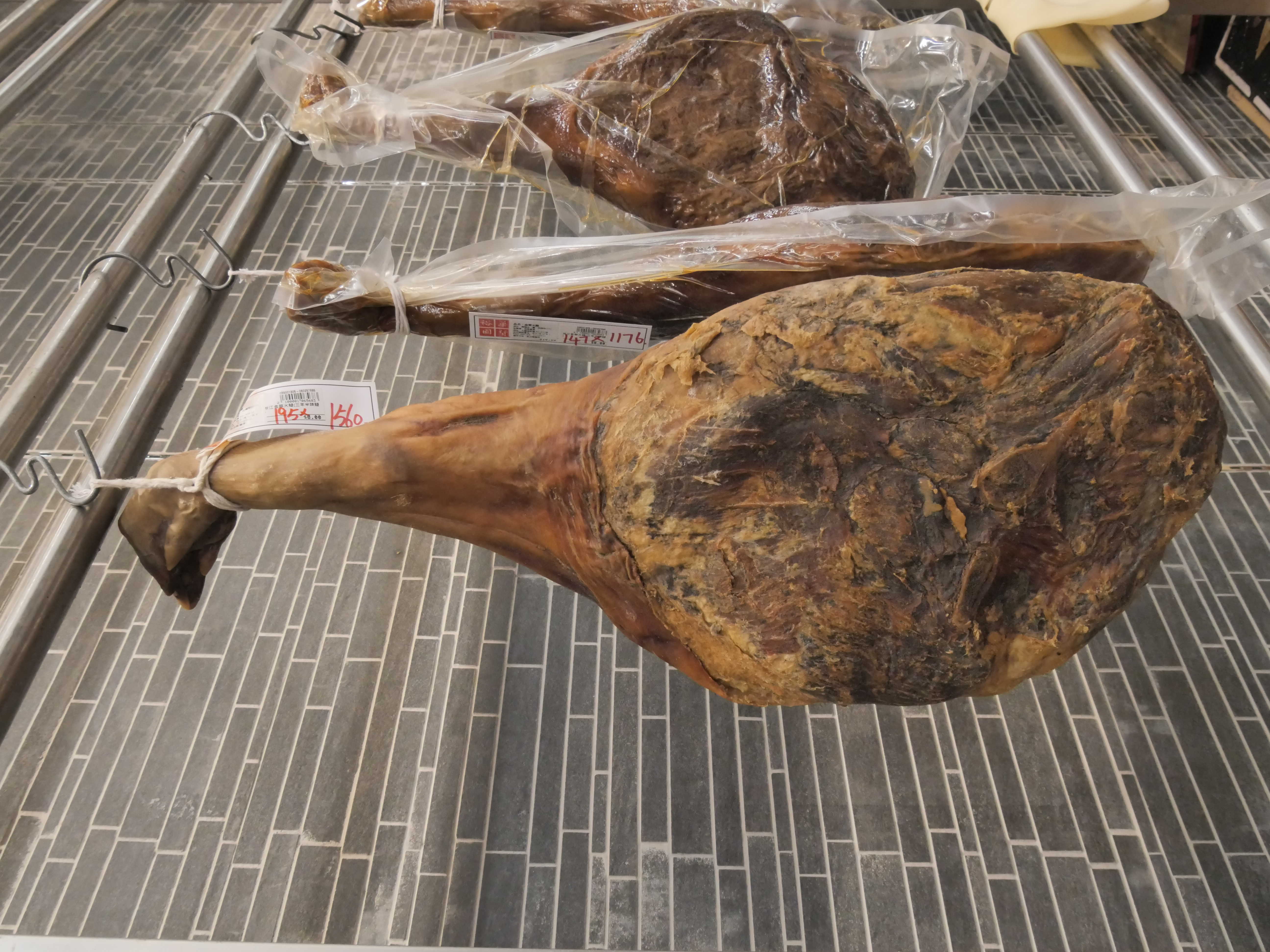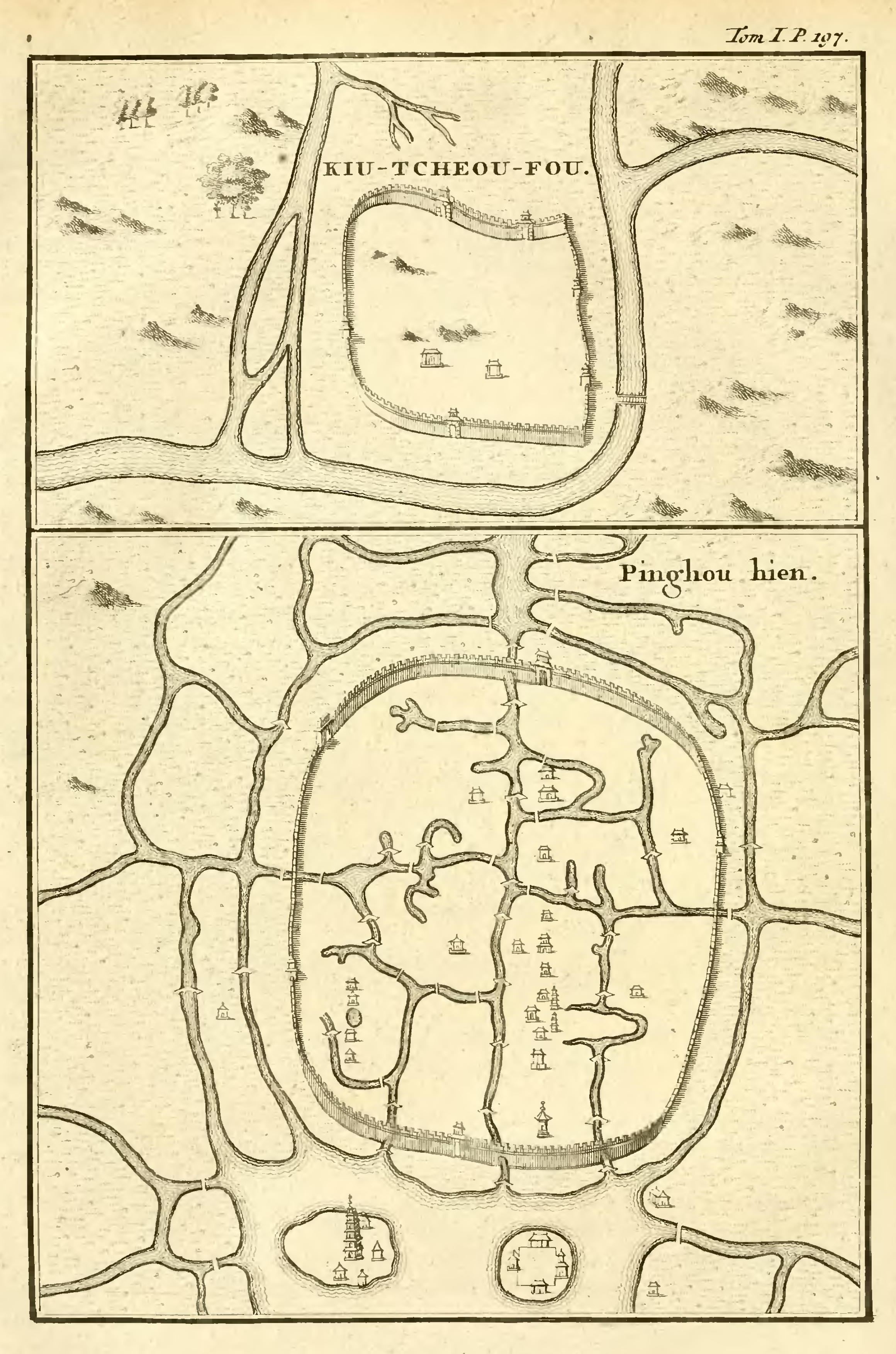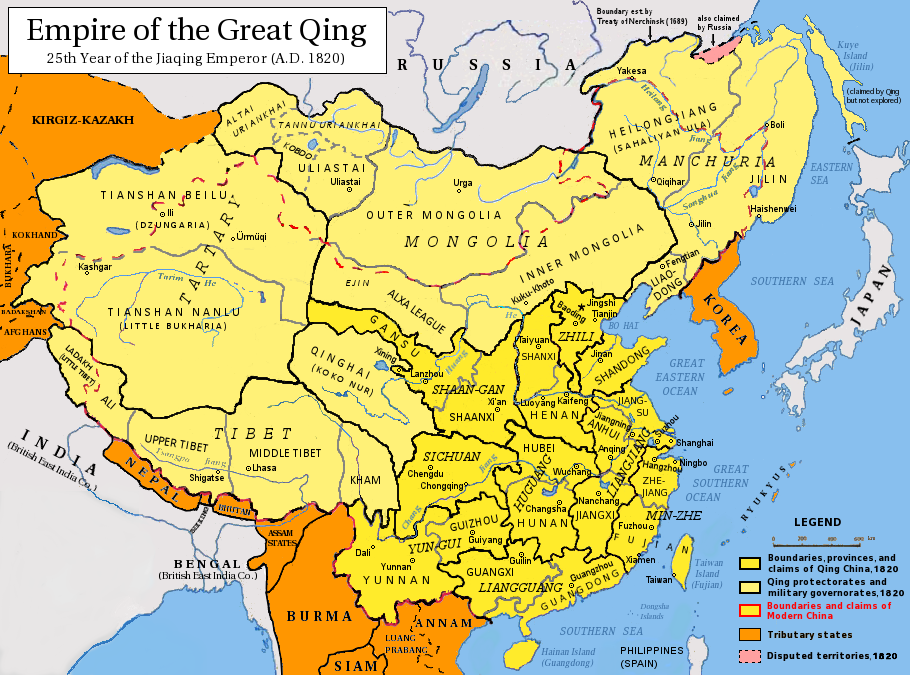|
Jinhua
Jinhua is a prefecture-level city in central Zhejiang province in eastern China. It borders the provincial capital of Hangzhou to the northwest, Quzhou to the southwest, Lishui to the south, Taizhou, Zhejiang, Taizhou to the east, and Shaoxing to the northeast. Its population was 7,050,683 as of the 2020 census including 1,463,990 in the built-up (or metro) area made of two urban districts (not including yet the satellite city of Lanxi, Zhejiang, Lanxi, which has become essentially a suburban offshoot of Jinhua's main urban area). Jinhua is rich in Ultisols, red soil and forest resources. The Jinhua or Wu River flows through the Lan and Fuchun to the Qiantang River beside Hangzhou, which flows into Hangzhou Bay and the East China Sea. In medieval China, it formed part of the water network feeding supplies to the southern end of the Grand Canal of China, Grand Canal. It is best known for its dry-cured Jinhua ham. History and culture The history of Jinhua dates back to the 2nd ... [...More Info...] [...Related Items...] OR: [Wikipedia] [Google] [Baidu] |
Jinhua Ham
Jinhua ham () is a type of specialty dry-cured ham named after the city of Jinhua, where it is produced, in Zhejiang province, China. The ham is used in Chinese cuisines to flavor stewed and braised foods as well as for making the stocks and broths of many Asian soup#Traditional soup bases, Chinese soups. The ham was awarded first prize in the Panama–Pacific International Exposition, 1915 Panama International Merchandise Exhibition. Production Jinhua ham is traditionally produced using the hind legs of a breed of pig native to China known as the "two ends black" (兩頭烏), which have black hair growing on their heads and hindquarters with white midsections. This breed is quick to mature; it has excellent meat quality and thin skin. Ham production begins when air temperatures drop below . The process takes approximately 8 to 10 months to complete. Ham production is separated into six stages, starting in the winter and ending the following autumn: #Meat preparation: Well ... [...More Info...] [...Related Items...] OR: [Wikipedia] [Google] [Baidu] |
Wucheng District
Wucheng () is a district of the city of Jinhua, Zhejiang ) , translit_lang1_type2 = , translit_lang1_info2 = ( Hangzhounese) ( Ningbonese) (Wenzhounese) , image_skyline = 玉甑峰全貌 - panoramio.jpg , image_caption = View of the Yandang Mountains , image_map = Zhejiang i ... province, China. Administrative divisions Subdistricts: * Chengdong Subdistrict (城东街道), Chengzhong Subdistrict (城中街道), Chengxi Subdistrict (城西街道), Chengbei Subdistrict (城北街道), Jiangnan Subdistrict (江南街道), Xiguan Subdistrict (西关街道), Qiubin Subdistrict (秋滨街道), Xinshi Subdistrict (新狮街道), Sanjiangkou Subdistrict (三江口街道) Towns: * Luodian (罗店镇), Jiangtang (蒋堂镇), Tangxi (汤溪镇), Luobu (罗埠镇), Yafan (雅畈镇), Langya (琅琊镇), Yangbu (洋埠镇), Andi (安地镇), Bailongqiao (白龙桥镇) Townships: * Sumeng Township (苏孟乡), Zhuma Township (竹马乡), Qianxi ... [...More Info...] [...Related Items...] OR: [Wikipedia] [Google] [Baidu] |
Zhejiang
) , translit_lang1_type2 = , translit_lang1_info2 = ( Hangzhounese) ( Ningbonese) (Wenzhounese) , image_skyline = 玉甑峰全貌 - panoramio.jpg , image_caption = View of the Yandang Mountains , image_map = Zhejiang in China (+all claims hatched).svg , mapsize = 275px , map_caption = Location of Zhejiang in China , coordinates = , subdivision_type = Country , subdivision_name = China , named_for = Old name of Qiantang River , seat_type = Capital and largest city , seat = Hangzhou , established_title = Annexation by the Qin dynasty , established_date = 222 BC , established_title2 = Jiangnandong Circuit , established_date2 = 626 , established_title3 = Liangzhe Circuit , established_date3 = 997 , established_title4 = Zhejiang Province formed , established_date4 = 1368 , established_title5 = Republican Period , established_date5 = 1 January 1912 , established_title6 ... [...More Info...] [...Related Items...] OR: [Wikipedia] [Google] [Baidu] |
Lishui
Lishui (; Lishuinese: ''li⁶ syu³'' ) is a prefecture-level city in the southwest of Zhejiang province, People's Republic of China. It borders Quzhou, Jinhua and Taizhou to the north, Wenzhou to the southeast, and the province of Fujian to the southwest. The name of the city literally means "Beautiful Waters." History Lishui has a very long history, for during the Liangzhu culture period 4000 years ago, there were tribes living in the area. In 589, a prefecture called Chuzhou was established by the Sui dynasty with Kuocang, Songyang, Linhai, Yongjia, Angu and Lechen counties under its jurisdiction. Three years later, the prefecture's name was changed to Kuozhou and then to Yongjia County in 607. The name was changed back to Kuozhou in 621 during the Tang dynasty, to Jinyun County in the first year of the Tianbao era (742) and back to Kuozhou in the first year of Qianyuan Era (758). In 779, during the Tang dynasty, it was renamed Lishui County. The name of the a ... [...More Info...] [...Related Items...] OR: [Wikipedia] [Google] [Baidu] |
Lanxi, Zhejiang
Lanxi, alternately known as Lanchi and Lanki, is a county-level city under the administration of the prefecture-level city of Jinhua in west-central Zhejiang Province, east-central China. The city executive, legislature and judiciary The judiciary (also known as the judicial system, judicature, judicial branch, judiciative branch, and court or judiciary system) is the system of courts that adjudicates legal disputes/disagreements and interprets, defends, and applies the law ... are at Lanjiang Subdistrict (), together with the CPC and PSB branches. The town lies on the Lan River (Lanjiang), a tributary of the Fuchun River, both north-flowing; the Fuchun River empties into Hangzhou Bay. Population history Administration Towns () * Huangdian () * Zhuge () * Majian () * Youbu () Notice that Lanjiang Zhen had been cancelled and changed into Lanjiang Jiedao. Subdistricts () * Lanjiang () * Chixi () * Nyubu () Notice that some of the area of Nyubu had been accepted ... [...More Info...] [...Related Items...] OR: [Wikipedia] [Google] [Baidu] |
Quzhou
Quzhou is a prefecture-level city in western Zhejiang province, People's Republic of China. Sitting on the upper course of the Qiantang River, it borders Hangzhou to the north, Jinhua to the east, Lishui to the southeast, and the provinces of Fujian, Jiangxi and Anhui to the south, southwest and northwest respectively. Its population was 2,276,184 inhabitants as of the 2020 census of whom 902,767 lived in the built-up (or metro) area made of Qujiang and Kecheng urban Districts. Chinese actress and singer Zhou Xun was born in Quzhou. History Descendants of Confucius During the Southern Song dynasty the descendant of Confucius at Qufu, the Duke Yansheng Kong Duanyou fled south with the Song Emperor to Quzhou, while the newly established Jin dynasty (1115–1234) in the north appointed Kong Duanyou's brother Kong Duancao who remained in Qufu as Duke Yansheng. From that time up until the Yuan dynasty, there were two Duke Yanshengs, once in the north in Qufu and the other in t ... [...More Info...] [...Related Items...] OR: [Wikipedia] [Google] [Baidu] |
Taizhou, Zhejiang
Taizhou is a city located at the middle of the East China Sea coast of Zhejiang province. It is located south of Shanghai and southeast of Hangzhou, the provincial capital. It is bordered by Ningbo to the north, Wenzhou to the south, and Shaoxing, Jinhua, and Lishui to west. In addition to the municipality itself, the prefecture-level city of Taizhou includes 3 districts, 3 county-level cities, and 3 counties. As of the 2020 census, its total population was 6,662,888 inhabitants whom 3,578,660 lived in the built-up (''or metro'') area made of the three urban Districts and Wenling City now being largely conurbated. Etymology Taizhou's name is believed to derive from nearby Mount Tiantai. History Five thousand years ago, the ancestors of the modern inhabitants began to settle in this area. During the Xia, Shang, and Zhou dynasties, when the Chinese state was largely confined to the Yellow River basin, the area of present-day Taizhou was part of Dong'ou. Following the 3rd- ... [...More Info...] [...Related Items...] OR: [Wikipedia] [Google] [Baidu] |
Administrative Divisions Of The People's Republic Of China
The administrative divisions of China have consisted of several levels since 1412, due to mainland China's large population and geographical area. In the People's Republic of China, the constitution provides for three levels of government. However in practice, there are five levels of local government; the provincial (province, autonomous region, municipality, and special administrative region), prefecture, county, township, and village. Since the 17th century, provincial boundaries in mainland China have remained largely static. Major changes since then have been the reorganization of provinces in the northeast after the establishment of the People's Republic of China in 1949 and the formation of autonomous regions, based on Soviet ethnic policies. The provinces serve an important cultural role in China, as people tend to identify with their native province. Levels The Constitution of the People's Republic of China provides for three levels: the provincial, the county l ... [...More Info...] [...Related Items...] OR: [Wikipedia] [Google] [Baidu] |
Licence Plates Of The People's Republic Of China
Vehicle registration plates in China are mandatory metal or plastic plates attached to motor vehicles in mainland China for official identification purposes. The plates are issued by the local traffic management offices, which are sub-branches of local public security bureaus, under the rules of the Ministry of Public Security. Hong Kong and Macau, both of which are special administrative regions of China, issue their own licence plates, a legacy of when they were under British and Portuguese administration. Vehicles from Hong Kong and Macau are required to apply for licence plates, usually from Guangdong province, to travel on roads in mainland China. Vehicles from mainland China have to apply for Hong Kong licence plates or Macau licence plates to enter those territories. The font used are in the Heiti (Traditional: 黑體, Simplified: 黑体) style. History 1986-series plate In July 1986, the 1986-series Plates were put into use. The layout and format for them are ... [...More Info...] [...Related Items...] OR: [Wikipedia] [Google] [Baidu] |
Shaoxing
Shaoxing is a prefecture-level city on the southern shore of Hangzhou Bay in northeastern Zhejiang province, China. Located on the south bank of the Qiantang River estuary, it borders Ningbo to the east, Taizhou, Zhejiang, Taizhou to the southeast, Jinhua to the southwest, and Hangzhou to the west. As of the 2020 census, its population was 5,270,977 inhabitants among which, 2,958,643 (Keqiao, Yuecheng and Shangyu urban districts) lived in the built-up (or metro) area of Hangzhou–Shaoxing, with a total of 13,035,326 inhabitants. Notable residents of Shaoxing include Wang Xizhi, the parents of Zhou Enlai, Lu Xun, and Cai Yuanpei. It is also noted for Shaoxing wine, meigan cai, and stinky tofu, and was featured on ''A Bite of China''. Its local variety of Chinese opera sung in the local dialect and known as Yue opera is second in popularity only to Peking opera. In 2010, Shaoxing celebrated the 2,500th anniversary of the founding of the city. Economically, the city is driven by ... [...More Info...] [...Related Items...] OR: [Wikipedia] [Google] [Baidu] |
Qiantang River
The Qiantang River (), formerly known as the Hangchow River Postal Map Romanization, or Tsientang River, is a rivers of China, river in East China. An important commercial artery, it runs for through Zhejiang, passing through the provincial capital Hangzhou before flowing into the East China Sea via Hangzhou Bay south of Shanghai. Its original name, the "Zhe River" or "Zhe Jiang", is the origin of the name of Zhejiang province. The river is also known, along with Hangzhou Bay, for having what is called by locals as the "Silver Dragon", the world's largest tidal bore, a phenomenon where the leading edge of the incoming tide forms a wave (or waves) that can rise to a height of and travels up the river or narrow bay at top speeds of against the direction of the river or bay's current, and can be seen from miles away. Etymology Its upper stretch near the AnhuiJiangxi border is also known as the Xin'an River (, "Newly Peaceful"); its middle stretch through the mountains of Zhe ... [...More Info...] [...Related Items...] OR: [Wikipedia] [Google] [Baidu] |








